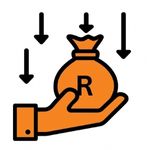
In 2025, a growing number of South Africans are turning to personal loans as financial pressures continue to mount and access to credit becomes more streamlined. Rising living costs, stagnant wage growth, and easier application processes through banks and fintech platforms have created conditions where borrowing is increasingly seen as both a necessity and, in some cases, a lifestyle choice. While personal loans can provide quick relief and flexibility, they also carry risks if not managed carefully.
Key Takeaways
- Growing reliance on personal loans: Loan originations in South Africa continue to climb, driven by rising living costs, easier access through banks and fintech platforms, and shifting consumer attitudes towards credit.
- Risks of over-indebtedness are increasing: Although more people qualify for loans, high delinquency rates and tighter lending criteria mean that many borrowers face the danger of unsustainable repayments and reduced future credit options.
- Approval depends on affordability, not just credit score: Lenders in 2025 place strong emphasis on income stability, debt-to-income ratios, and responsible application behaviour, making financial awareness and careful preparation essential for securing a loan.
What To Know About Personal Loans South Africa
Only Borrow From Registered Lenders
The National Credit Regulator (NCR) is responsible for supervising the credit industry and ensuring that South African borrowers are protected from harmful practices. Any company that provides personal loans in South Africa must be officially registered with the NCR. It is always worth confirming this, particularly when someone approaches you through WhatsApp, Facebook, or other social platforms.
By choosing a properly authorised provider, you can be confident that the loan is granted within the legal framework and under fair and responsible lending conditions.
About Arcadia Finance
Get your loan approved quickly with Arcadia Finance. Compare offers from 19 trusted, NCR-compliant lenders at no cost. Enjoy a simple, transparent process designed to match your financial goals.
Understand Your Repayment Terms
A personal loan in South Africa is not only about the amount you receive upfront but also about the total amount you need to repay.
Before committing, make sure to:
- Use a reliable loan calculator to estimate repayment costs
- Ask clearly about the size of monthly instalments
- Check whether there are any extra administration charges or compulsory insurance costs
For example, borrowing R3,000 over three months will usually work out more expensive than stretching the same loan over six months. However, the shorter term means you settle the debt sooner, while the longer term reduces the monthly instalment amount. Choosing the right option can help you keep repayments within your budget.
Avoid Loan Scams
Sadly, fraudulent operators are becoming more common in South Africa. Many of these scams target people under financial strain, advertising so-called “instant loans” with no real checks. If you are ever asked to pay an upfront fee before your loan is released, this is a clear warning sign.
A legitimate lender will never ask you to hand over money in advance. A genuine loan provider will follow a transparent process where the terms are explained, the costs are outlined, and you know what to expect before signing.
Affordability Is Key, Not Just Credit Score
In the current market, lenders are focusing on more than just a person’s credit history. A strong emphasis is placed on whether applicants can realistically manage their repayments. One of the most important considerations is the income-to-expense ratio, which shows how much room there is in a household budget to take on new debt. Even with past defaults or missed payments, applicants are not automatically disqualified, as lenders are primarily concerned with the borrower’s ability to repay without placing themselves under further financial strain.
Personal Loans Compared To Other Loan Types
Personal loans are generally:
- Unsecured, meaning you do not need to offer your house, car, or other assets as security
- Designed for short-term needs, usually ranging between one month and nine months
- Relatively quick to apply for and straightforward to manage once approved
When compared with credit cards or payday loans, personal loans often provide clearer repayment structures and a lower risk of falling into ongoing debt, provided they are used responsibly.
The Current State Of Personal Loans In South Africa
In recent years, South Africa has experienced a sharp rise in personal loan activity. Data from BusinessTech shows that personal loan originations grew by 14.5% year on year in the third quarter of 2024, which highlights the increasing appetite for this form of credit. Yet, this growth is accompanied by serious risks, as the account-level delinquency rate has reached 33.4%, raising significant concerns about whether many borrowers can meet their repayment commitments.
Key Drivers Behind The Rising Demand
A number of specific factors are contributing to the growing dependence on personal loans in the country:
- Economic Pressures: A large number of South Africans are relying on borrowed funds to manage daily living costs in the face of financial strain. Reports indicate that middle-income households are carrying a heavier burden, with core expenses climbing at a pace above overall inflation, leaving many with little choice but to seek credit.
- Access To Credit: Banks and other financial institutions have improved loan processing systems, reducing barriers to entry and making credit easier to obtain for wider sections of the population. Fintech solutions and online lending platforms have further streamlined the borrowing process, allowing faster approvals and payouts.
- Consumer Behaviour: An increasing share of borrowers are now directing personal loan funds towards lifestyle choices, including home upgrades, tuition fees, or travel costs. This reflects a shift in attitudes where loans are no longer seen solely as a safety net, but also as a tool for discretionary spending.
What This Means for South African Consumers
The surge in loan applications is not merely a headline figure but a reality that is beginning to shape the financial lives of many South Africans. As borrowing grows, the effects are being felt in several ways that influence both access to credit and the risks attached to it.

Greater Access, But Greater Risk of Overextension
Access to personal loans has widened because underwriting has become more inclusive and fintech platforms have introduced faster approval systems. Yet this easier access often leaves borrowers financially stretched. By 2024, estimates suggested that around ten million South Africans were already over-indebted, while more than a third of formal credit users struggled to keep up with repayments. For many consumers, qualifying for a loan does not always translate into sustainable repayments, and this can result in ongoing cycles of debt that are difficult to escape.

Higher Interest and Stricter Terms
As default risks rise, lenders are becoming more cautious. Financial institutions are starting to tighten their lending criteria and in some cases reduce the amounts available to higher-risk borrowers. Those with weaker credit histories may still obtain approval but usually at higher interest rates or with shorter repayment periods. These conditions can make monthly instalments more burdensome and increase the chances of repayment challenges.

Impact on Credit Health and Future Borrowing Ability
Every repayment behaviour feeds into the records maintained by credit bureaus. Missed instalments or defaults reduce the likelihood of securing favourable terms in the future. The TransUnion Consumer Credit Index showed in the first half of 2024 that household credit health remained under pressure, with the index below the neutral benchmark of fifty. For consumers, this indicates that a misstep in repayment today may limit access to better credit opportunities later on.

Uneven Effects Across Income Segments
The impact of rising loan activity is not uniform across income groups. Middle-income and lower-income households face the greatest vulnerability because they have less financial buffer for emergencies such as job losses, medical bills or urgent repairs. By contrast, higher-income earners are better placed to absorb shocks and often negotiate more favourable terms. For many lower-income households, small personal loans are being used to cover essentials like food and utilities rather than optional lifestyle spending, placing them under further financial pressure.

More Competition Among Lenders, More Consumer Choices
The growth in loan demand has also intensified competition among lenders. Traditional banks are now operating alongside fintech firms and alternative providers that often approve applications more quickly and offer smaller loan sizes tailored to specific needs. This increased competition provides consumers with more options, but it also raises the risk of encountering lenders who impose hidden costs, less transparent conditions or unfavourable repayment structures. Borrowers must therefore exercise caution and evaluate offers carefully before committing.

Heightened Importance of Financial Awareness
The changing borrowing environment makes financial awareness more critical than ever. South Africans need to understand which factors affect loan approval, such as credit score, income stability and existing debt levels. With default risks climbing, every applicant should assess whether they can realistically afford the monthly repayments, how changing interest rates may affect their obligations and whether taking a loan now could hinder their ability to borrow for more significant needs in the future, such as education or housing.
What Are The Motivations Behind South Africans’ Borrowing Patterns?
Based on current financial data, several borrowing behaviours can be identified among South Africans in 2025:
- Goal-driven personal loans: The growth in average loan values indicates that many individuals are turning to credit to cover structured expenses such as higher education, renovations to property, or combining several debts into a single repayment plan.
- Short-term relief through non-bank lenders: The use of smaller, quick-access loans is expanding, providing temporary assistance for cash flow shortages. However, these products often carry greater repayment risks for borrowers who may already be financially stretched.
- Credit cards as liquidity tools: The steady rise in both the number of active accounts and the outstanding balances suggests that credit cards are now being relied upon for day-to-day purchases. This includes both routine convenience spending and essential household needs, though financial institutions continue to apply strict oversight.
- Emergency credit as an ongoing necessity: A significant portion of borrowing is still directed towards urgent requirements, with households frequently seeking credit to cover essentials such as groceries, electricity, and water bills.
How To Improve Your Chances Of Loan Approval In 2025
| Tip | Description |
|---|---|
| Review and Strengthen Your Credit Record | Your credit profile remains one of the most important factors lenders consider. In 2025, South Africans can still request a free annual report from major credit bureaus. Review it carefully, correct errors, pay overdue accounts, and avoid multiple applications in a short period. A clean record shows responsibility and reduces the lender’s perceived risk. |
| Manage Your Debt-to-Income Ratio | Lenders assess whether your current debts and expenses leave room for another repayment. A lower debt-to-income ratio signals better affordability. Reduce credit card balances, avoid unnecessary borrowing, and pay off small loans before applying. This improves your approval odds and may lead to better loan terms. |
| Demonstrate Consistent and Verifiable Income | Stable income reassures lenders that you can meet repayments. Employees can use payslips and bank statements, while self-employed applicants may need tax returns or financial statements. Reliable, predictable income matters more than salary size and reflects your ability to repay on time. |
| Select the Right Lender and Product for Your Profile | Different lenders have different criteria. Research which ones suit your credit score and loan needs—short-term or large personal loans. Choosing the right match increases approval chances. Use pre-qualification tools that don’t affect your credit score to gauge your eligibility first. |
| Prepare Documentation and Apply Responsibly | Provide accurate and complete documents such as ID, proof of residence, and income evidence. Avoid sending multiple applications simultaneously, as this can hurt your credit image. A well-prepared, honest application with full documentation shows commitment and reliability. |
Conclusion
The rise in loan applications in South Africa during 2025 reflects both the economic pressures facing households and the wider availability of credit through banks and fintech lenders. While personal loans can provide vital support for covering essentials, consolidating debts, or managing unexpected expenses, they also carry significant risks if taken without careful consideration. For consumers, the focus should be on affordability, responsible borrowing, and ensuring that applications are made only to registered, reputable providers. By approaching the process with awareness and preparation, South Africans can make use of personal loans in a way that strengthens their financial position rather than worsening it.
Frequently Asked Questions
Many households are experiencing financial strain due to rising living costs and limited wage growth. At the same time, fintech platforms and banks have simplified loan applications, making credit more accessible than in previous years.
A legitimate lender must be registered with the National Credit Regulator (NCR). You can confirm this by checking the NCR’s official database or asking the provider directly for proof of registration before committing.
Not necessarily. In 2025, lenders often place as much emphasis on affordability as on credit scores. If you can demonstrate a steady income and manageable expenses, you may still qualify, although terms may be stricter.
It is important to review your debt-to-income ratio, understand the full repayment schedule, and check for additional charges such as administration or insurance fees. Using a loan calculator can help you see whether repayments fit your budget.
You can strengthen your application by paying off smaller debts, keeping your credit record up to date, showing reliable income through payslips or bank statements, and ensuring that you only apply to lenders and products suited to your profile.







